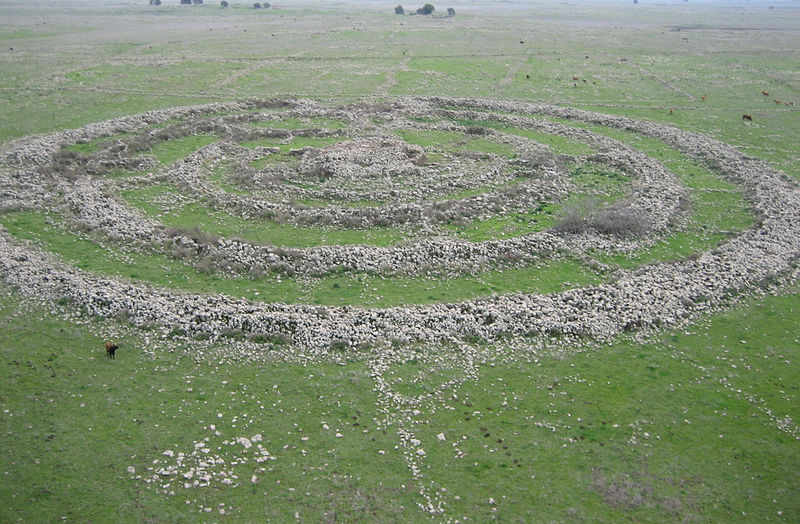Gilgal Refaim in the Golan Heights
November 7th 2013
 There’s something giant and mysterious in the Golan Heights. Gilgal Refaim, also known as Rujm el-Hiri in Arabic, has been called the Stonehenge of the Middle East. Located 10 miles east of the Kinneret (Sea of Galilee), it’s a man-made stone formation in the shape of concentric circles.
There’s something giant and mysterious in the Golan Heights. Gilgal Refaim, also known as Rujm el-Hiri in Arabic, has been called the Stonehenge of the Middle East. Located 10 miles east of the Kinneret (Sea of Galilee), it’s a man-made stone formation in the shape of concentric circles.
Archeologists believe the structure, which was created on the surface of a large plateau, is approximately 5,000 years old. Four rings, some complete and some incomplete, made up of more than 42,000 basalt rocks, were set in place approximately 3,000 BCE – and no one is quite sure why. Scholars offer several hypotheses.
There is some evidence that the site once served as a primitive calendar, helping ancient people mark the seasons. Others argue that it was designed to allow astronomical observations, perhaps to help determine when to time ancient religious ceremonies, such as the sun god worship ceremonies that might have been held here 5,000 years ago.
Gilgal Refaim means “Wheel of Spirits,” and the giant stone formation is presumed by some scholars to have a link to an ancient cult of the dead. There is an irregular, cone-shaped pile of stones in the center of the innermost circle that reaches 15 feet in height. Archeologists believe that this may have been a burial site constructed 1,000 years after the rest of the monument. Despite the fact that no human bones were found upon excavation, some scholars hypothesize that the site was used a tomb for important leaders. Another, more gruesome archeological theory is that dead bodies were once laid out among the stones, making it possible for birds to eat away the flesh, leaving only the bones.
Whether you’re hiking the Golan Trail or just in the area to see Gilgal Refaim, you can’t help but notice the hundreds of other distinctive small stone formations in the area. Called dolmen, these ancient stone piles consist of a large stone lying horizontally, supported by several smaller stones standing vertically. Dolmen do not occur naturally. Someone built each of the hundreds of dolmen in the vicinity, and they are believed to mark ancient graves.











